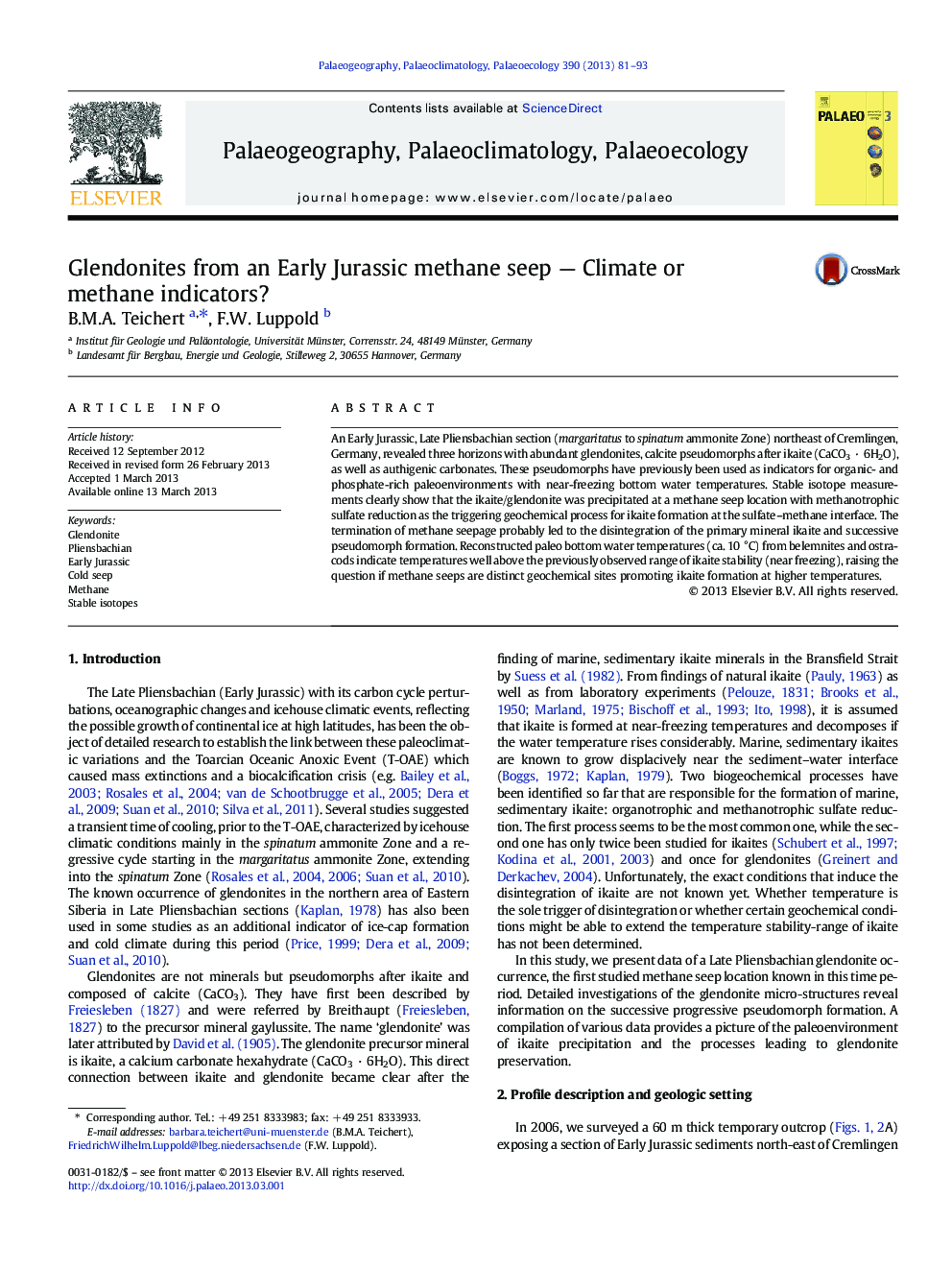| کد مقاله | کد نشریه | سال انتشار | مقاله انگلیسی | نسخه تمام متن |
|---|---|---|---|---|
| 4466497 | 1622199 | 2013 | 13 صفحه PDF | دانلود رایگان |

• First description of Early Jurassic, late Pliensbachian, glendonite-bearing methane seep
• Ikaite was precipitated due to methanotrophic sulfate reduction.
• Results raise the question if ikaite is always a true cold water indicator.
An Early Jurassic, Late Pliensbachian section (margaritatus to spinatum ammonite Zone) northeast of Cremlingen, Germany, revealed three horizons with abundant glendonites, calcite pseudomorphs after ikaite (CaCO3 · 6H2O), as well as authigenic carbonates. These pseudomorphs have previously been used as indicators for organic- and phosphate-rich paleoenvironments with near-freezing bottom water temperatures. Stable isotope measurements clearly show that the ikaite/glendonite was precipitated at a methane seep location with methanotrophic sulfate reduction as the triggering geochemical process for ikaite formation at the sulfate–methane interface. The termination of methane seepage probably led to the disintegration of the primary mineral ikaite and successive pseudomorph formation. Reconstructed paleo bottom water temperatures (ca. 10 °C) from belemnites and ostracods indicate temperatures well above the previously observed range of ikaite stability (near freezing), raising the question if methane seeps are distinct geochemical sites promoting ikaite formation at higher temperatures.
Journal: Palaeogeography, Palaeoclimatology, Palaeoecology - Volume 390, 15 November 2013, Pages 81–93